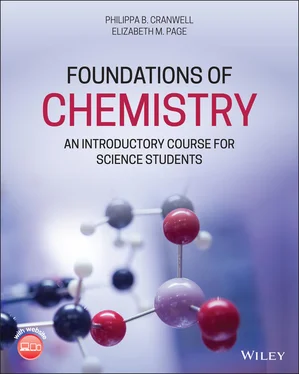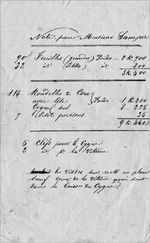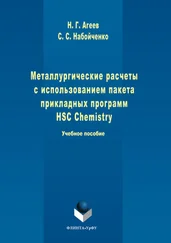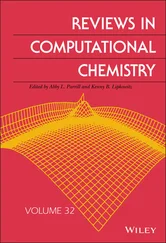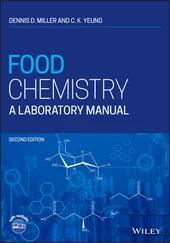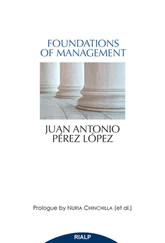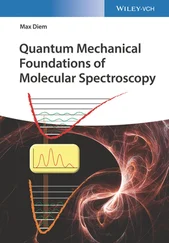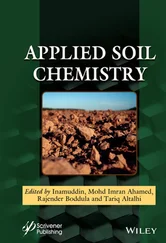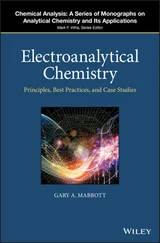1 Cover
2 Title Page Foundations of Chemistry An Introductory Course for Science Students Philippa B. Cranwell University of Reading Reading, UK and Elizabeth M. Page University of Reading Reading, UK
3 Copyright Page
4 Dedication Page
5 Preface
6 Acknowledgements
7 Contributors
8 About the companion website
9 0 Fundamentals 0.1 Introduction to chemistry 0.2 Measurement in chemistry and science – SI units 0.3 Expressing large and small numbers using scientific notation 0.4 Using metric prefixes 0.5 Significant figures 0.6 Calculations using scientific notation 0.7 Writing chemical formulae and equations Quick‐check summary End‐of‐chapter questions
10 1 Atomic structure 1.1 Atomic structure 1.2 Electronic structure Quick‐check summary End‐of‐chapter questions
11 2 Chemical bonding 2.1 Bonding 2.2 Valence Shell Electron Pair Repulsion Theory (VSEPR) 2.3 Polar bonds and polar molecules 2.4 Intermolecular forces Quick‐check summary End‐of‐chapter questions
12 3 Amount of Substance 3.1 Masses of atoms and molecules 3.2 Amount of substance 3.3 Calculations with moles 3.4 Solutions; concentrations and dilutions 3.5 Titration calculations 3.6 Calculations with gas volumes Quick‐check summary End‐of‐chapter questions
13 4 States of matter 4.1 Introduction 4.2 Solids 4.3 Liquids 4.4 Gases Quick‐check summary End‐of‐chapter questions
14 5 Oxidation‐reduction (redox) reactions 5.1 Redox reactions 5.2 Disproportionation reactions 5.3 Redox titrations Quick‐check summary End‐of‐chapter questions
15 6 Energy, enthalpy, and entropy 6.1 Enthalpy changes 6.2 Entropy and Gibbs free energy Quick‐check summary End‐of‐chapter questions
16 7 Chemical equilibrium and acid‐base equilibrium 7.1 Introduction 7.2 Equilibrium and reversible reactions 7.3 Acid‐base equilibria Quick‐check summary End‐of‐chapter questions
17 8 Chemical kinetics – the rates of chemical reactions 8.1 Introduction 8.2 The rate of reaction 8.3 Determining the rate of a chemical reaction 8.4 The rate expression 8.5 The half‐life of a reaction 8.6 Reaction mechanisms 8.7 Effect of temperature on reaction rate Quick‐check summary End‐of‐chapter questions
18 9 Electrochemistry 9.1 Introduction 9.2 Using redox reactions 9.3 Using redox reactions – galvanic cells 9.4 Using redox reactions – electrolytic cells Quick‐check summary End‐of‐chapter questions
19 10 Group trends and periodicity 10.1 The periodic table: periods, groups, and periodicity 10.2 Trends in properties of elements in the same vertical group of the periodic table 10.3 Trends in properties of elements in the same horizontal period Quick‐check summary End‐of‐chapter questions
20 11 The periodic table – chemistry of Groups 1, 2, 7 (17), and transition elements 11.1 Introduction 11.2 Group 1 – the alkali metals 11.3 Group 2 – the alkaline earth metals 11.4 Group 7 (17) – the halogens 11.5 The transition elements Quick‐check summary End‐of‐chapter questions
21 12 Core concepts and ideas within organic chemistry 12.1 Types of molecular formulae 12.2 Nomenclature of simple alkanes 12.3 Isomers 12.4 Drawing reaction mechanisms 12.5 Types of reactions Quick‐check summary End‐of‐chapter questions
22 13 Alkanes, alkenes, and alkynes 13.1 Alkanes: an outline 13.2 Alkenes: an outline 13.3 Alkynes: an outline Quick‐check summary End‐of‐chapter questions
23 14 Reactivity of selected homologous series 14.1 Alcohols 14.2 Aldehydes and ketones 14.3 Carboxylic acids 14.4 Esters 14.5 Amides 14.6 Amines 14.7 Nitriles Quick‐check summary End‐of‐chapter questions
24 15 The chemistry of aromatic compounds 15.1 Benzene 15.2 Reactions of benzene with electrophiles 15.3 Aniline Quick‐check summary End‐of‐chapter questions
25 16 Substitution and elimination reactions 16.1 Substitution reactions 16.2 Elimination reactions 16.3 Comparison of substitution and elimination reactions Quick‐check summary End‐of‐chapter questions
26 17 Bringing it all together 17.1 Functional group interconversion 17.2 Bringing it all together Quick‐check summary End‐of‐chapter questions
27 18 Polymerisation 18.1 Polymerisation Quick‐check summary End‐of‐chapter questions
28 19 Spectroscopy 19.1 Mass spectrometry 19.2 Infrared spectroscopy (IR) 19.3 Nuclear magnetic resonance spectroscopy (NMR) 19.4 Bringing it all together Quick‐check summary End‐of‐chapter questions
29 Appendix
30 Short end-of-chapter answers
31 Index
32 End User License Agreement
1 Chapter 0 Table 0.1 Base SI quantities used in chemistry with symbols and units. Table 0.2 Commonly used derived units. Table 0.3 Some common prefixes and their values with quantities and symbols. Table 0.4 Symbols and charges for some common cations and anions. Table 0.5 State symbols commonly used in chemical equations.
2 Chapter 1 Table 1.1 Properties of subatomic particles. Table 1.2 The maximum number of electrons in the first four energy levels. Table 1.3 Arrangement of electrons in the first 11 elements of the periodic t... Table 1.4 Electron configurations for the first 36 elements.
3 Chapter 2 Table 2.1 The names, molecular formulae, dot‐and‐cross diagrams, and display ... Table 2.2 Approximate strengths of different types of bonds and intermolecula...
4 Chapter 4Table 4.1 A summary of the properties of ionic, covalent, and metallic compou...Table 4.2 Physical properties of the halogens.Table 4.3 Properties of noble gases.
5 Chapter 6Table 6.1 Values of mean bond energies.Table 6.2 Calculation of enthalpy of reaction using mean bond energies.Table 6.3 Standard molar entropy values for selected elements and compounds.Table 6.4 Combinations of possible enthalpy and entropy changes for a reactio...
6 Chapter 7Table 7.1 Summary of the effect of changes in reaction conditions upon the eq...Table 7.2 Some common acids and the ions they form when dissolved in water.Table 7.3 Some common bases and the ions they form when dissolved in water.Table 7.4 Some weak acids and their K aand pK avalues.
7 Chapter 8Table 8.1 Concentration, rate, and time data for the reaction of bromine with...Table 8.2 Some chemical reactions and their related rate expressions and over...Table 8.3 Initial rates data for the reaction 2NO(g) + O 2(g) → 2NO 2(g).Table 8.4 Kinetics data for the decomposition of NO 2at varying temperatures....
8 Chapter 9Table 9.1 Standard reduction potentials for metal/metal ion half‐cells.Table 9.2 List of some common standard reduction potentials in numerical orde...Table 9.3 Comparison of galvanic and electrolytic cells.
9 Chapter 10Table 10.1 Electron affinity values for Group 7 (17) elements.Table 10.2 The electronic configurations and number of protons for selected e...Table 10.3 Names and charges of monatomic anions.Table 10.4 The bonding, structures, and melting and boiling points of the Per...
10 Chapter 11Table 11.1 Physical properties of Group 1 metals.Table 11.2 Electron configurations of the elements of Group 1.Table 11.3 Physical properties of the Group 2 elements.Table 11.4 Electron configurations of Group 2 elements.Table 11.5 The solubilities of Group 2 metal hydroxides increase down the gro...Table 11.6 Electron configurations of the halogen elements.Table 11.7 Colours of elemental halogens in polar and non‐polar solvents.Table 11.8 Standard reduction potentials of the halogens.Table 11.9 Displacement reactions of halogens.Table 11.10 Oxyanions of chlorine.Table 11.11 Results from tests to identify halide ions.Table 11.12 The electron configurations of Period 4 elements and stable ions....Table 11.13 Maximum stable oxidation states and most common oxidation states ...
Читать дальше
